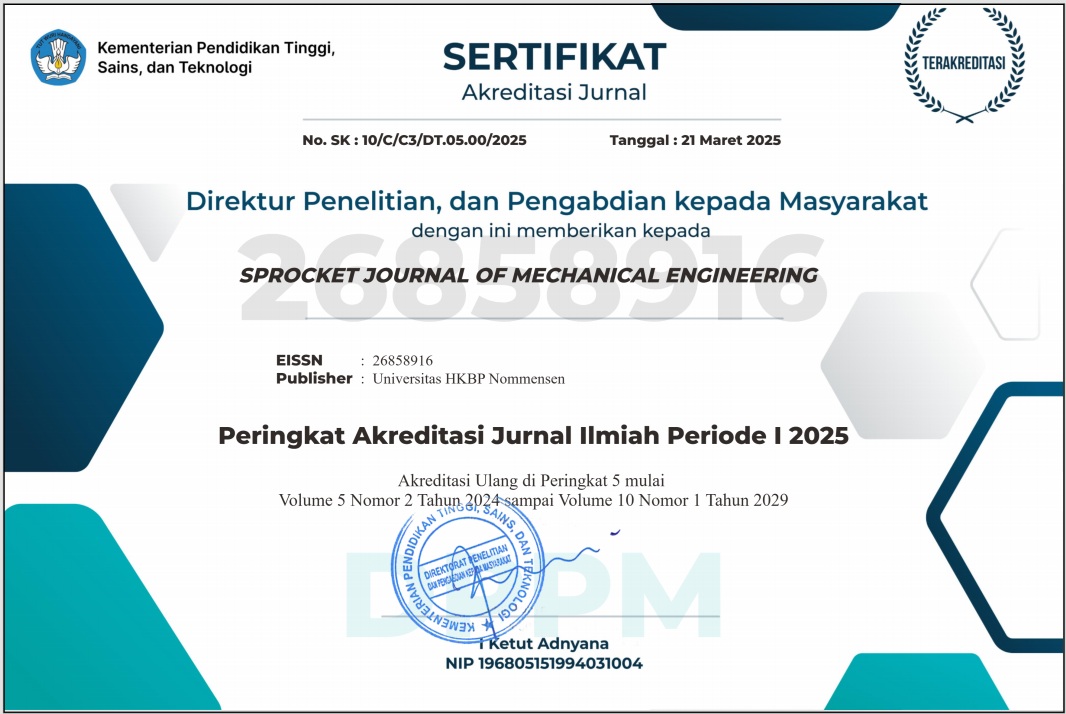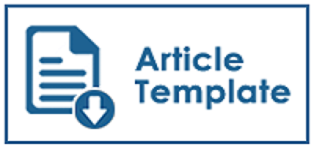Korelasi Nilai Hambatan Konus Terhadap Parameter Rembesan Dalam Aplikasinya Pada Dinding Penahan Tanah
Abstract
Retaining walls are one of the constructions that are often found as slope safety walls which function to withstand lateral forces from the soil behind them. Retaining walls must be able to withstand shear, overturn, bearing capacity and meet the provisions of SNI 8460 2017 Geotechnical Design Requirements. The retaining wall must also be able to withstand water seepage into the soil behind it so it is necessary to know the amount of the seepage coefficient (k). The value of the seepage coefficient (k) can be determined from the Constant Head and Falling Head laboratory tests as well as by using the correlation from the results of the CPT Cone Penetration Test (which was used in this study). The CPT test was carried out at 4 stations that had experienced slope failure. Furthermore, this study designed a retaining wall in the landslide area by taking into account the magnitude of the seepage coefficient (k). From the four CPT points, the seepage coefficient values were obtained k1 = 1.06E-05 cm/sec, k2 = 5.79E-06 cm/sec, k3 = 6.77E-06 cm/sec and k4 = 6.46E-06 cm/sec. Taking into account the presence of water seepage behind the retaining wall, it is obtained that FK 1.65 still does not meet FK under conditions of high levels of uncertainty and large repair costs (FK requirements > 2.0 according to SNI 8460 2017). From this study, it was found that by calculating the seepage coefficient (k), the FK value was not sufficient and it was suggested that in its implementation, efforts to compact the soil layer by layer behind the wall were needed so that the soil behind the wall was quite dense.
References
Bergado, D.T., et.al., 2002. Prefabricated PVDs in Soft Bangkok Clay, Canadian Geotech Journal, Vol 39, pp 304-315.
Christady, H. 2010. Mekanika Tanah 2 Edisi Ke Lima. Gadjah Mada University Press. Yogyakarta.
Christady, H. 2013. Geosintetik Untuk Rekayasa Jalan Raya Perancangan dan Aplikasi. Gadjah mada University Press. Yogyakarta
Craig, R. F. 1994. Mekanika Tanah Edisi Keempat. Erlangga. Jakarta.
Das, M. Braja. 1993. Mekanika Tanah (Prinsip-prinsip Rekayasa Geoteknik). Erlangga.Jakarta.
Giroud, J.P. 1981. Designing With Geotextiles, Mater. Const (Paris), Vol.14. no.82, pp.257272
Hansbo, S. 1979. Geodrains in Theory and Practice, Geotechnical Report, Terrafigo, Stockholm, Swedia.
Terzaghi, K. 1925. Erdbaumechanik auf Bodenphysikalischer Grundlage, Deutichke, Vienna.
Terzaghi, K., and Peck, R. B. 1967. Soil Mechanics in Engineering Practice, 2nd ed., Wiley, New York.
Yan, S.W., Chu, J. 2005. Soil Improvement for a Storage Yard Using the Combined Vacuum and Fill Preloading Method. Canadian Geotech Journal, Vol 42, pp 1094-1104

This work is licensed under a Creative Commons Attribution 4.0 International License.
Penulis yang menerbitkan dengan SPROCKET JOURNAL OF MECHANICAL ENGINEERING menyetujui ketentuan berikut :
- Penulis memegang hak cipta dan memberikan jurnal hak penerbitan pertama dengan karya yang dilisensikan secara bersamaan di bawah Lisensi Internasional Creative Commons Atribusi 4.0 . yang memungkinkan orang lain untuk berbagi karya tersebut dengan pengakuan atas kepengarangan karya dan penerbitan awal dalam jurnal ini.
- Penulis dapat membuat pengaturan kontraktual tambahan yang terpisah untuk distribusi non-eksklusif atas versi jurnal yang diterbitkan dari suatu karya (misalnya, mempostingnya ke repositori institusional atau menerbitkannya dalam sebuah buku), dengan pengakuan atas penerbitan awalnya di jurnal ini.
- Penulis diizinkan dan didorong untuk mengunggah karya mereka secara daring (misalnya, di repositori institusi atau di situs web mereka) sebelum dan selama proses penyerahan, karena hal ini dapat mengarah pada pertukaran yang produktif, serta kutipan yang lebih awal dan lebih banyak dari karya yang diterbitkan (Lihat Pengaruh Akses Terbuka ).






.png)
.png)

